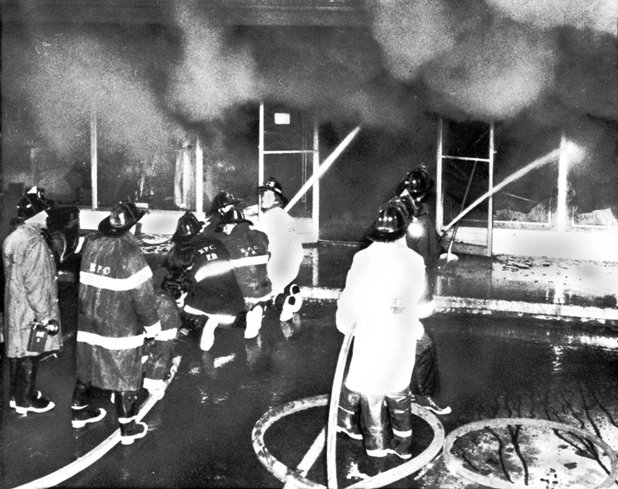In the early morning hours of June 30, 1974, a rock group called Creation was blaring away when the first wisps of acrid smoke drifted into Gulliver’s, a nightclub that straddled the Port Chester, New York, and Greenwich, Connecticut border. Then, according to one of the survivors, “smoke came in really quickly and there was almost a stampede for the stairway.”
Two Greenwich police, investigating a burglary at a store across the parking lot, saw smoke and called in the alarm. Three hundred firefighters from New York and Connecticut, including central Greenwich, Sound Beach, Cos Cob, and Byram, responded. But, by the time the firefighters arrived, the building was engulfed in flames; the heat and smoke were so intense that it was almost impossible to enter the building even with air packs. Also on scene were ambulances from central Greenwich, Byram, Glenville, Cos Cob, and Old Greenwich. The Greenwich chapter of the American Red Cross sent an emergency unit with a fully trained Red Cross first aid disaster team as well as a canteen service to provide food and coffee. Red Cross cars and drivers with a social worker were alerted to provide transportation for parents of the young club goers if needed.
The fire at Gulliver’s was the deadliest dance club fire in the United States in more than a generation. Killing 24 people, mostly from smoke inhalation and carbon monoxide poisoning, it called attention to the dangers of herding young people into windowless underground rooms without smoke alarms, sprinklers, fire-resistant walls, or limits on occupancy. Gulliver’s had passed inspection on May 8—everything legally required had been done, but as a New York Times reporter said, “that was certainly not enough…With 24 young people needlessly dead, law and technology cannot be so powerless.” In the aftermath, some municipalities put safeguards against fires into effect, but, sadly, it would take future tragedies of a similar nature to inspire statewide legislation.
Karen Frederick, Curator and Exhibitions Coordinator, and Anne Young, former Curator of Library and Archives, of the Greenwich Historical Society contributed this article and co-curated the exhibition Everyday Heroes: Greenwich First Responders (September 14 through August 26, 2012) from which it is derived.









